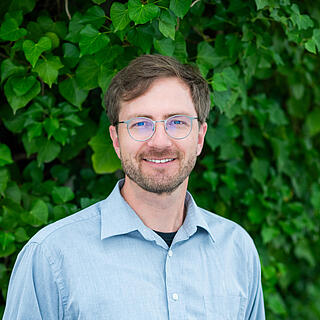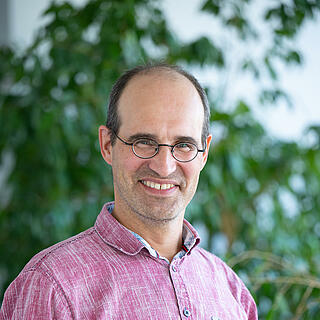Land-use transition - Forests need protection

© fstopimages/Malte Müller
Forests have been dying for decades
Our forests have not been doing well for decades. The term "forest dieback" was coined back in the early 1980s and led to intense discussions about controlling air pollution. Forests around the world are still in poor condition today. In Germany, the main problems are droughts and pest infestations associated with climate change. As a result, spruce stands in particular are collapsing, while deciduous forests so far appear to be more resilient. In how far they will be able to withstand the impacts of climate change is not yet clear. A total of 285,000 hectares of forest have already died off in Germany, while almost three million hectares − a quarter of the national forest estate − are considered at risk.
Forest owners on the horns of dilemma
Anyone who owns a forest in Germany has so far only made money from the sale of timber. Those who manage their forests more ecologically than prescribed by law, whose focus is not so much on mass production and who therefore employ gentler harvesting methods and harvest and sell less timber, often earn less money.
We consume far more wood in Germany than the global average: 1.5 cubic metres per capita, compared to just 0.5 cubic metres worldwide. In addition, Germany consumes more timber than it produces. Every year, 80 million cubic metres of wood is logged in this country. Fifteen million cubic metres are used directly as firewood and are burned without first transitioning through other uses. As much as 60 percent of hardwood is used directly for energy generation. This means that the German forest cannot add to the long-term carbon storage pool, as every cubic metre of wood removed reduces around 0.6 to 1.7 tonnes of CO2 from the forest's carbon store.
International deforestation
The forests’ poor condition is an international problem and they are under pressure around the world. In 2021 alone, 6.8 million hectares of forest were destroyed worldwide, an area the size of the Republic of Ireland. Moreover, this amount of forest loss represents enormous amounts of greenhouse gas emissions − a total of 3.9 gigatonnes CO2 equivalents. If deforestation was to be completely halted by 2030, it would need to be reduced by more than ten percent per year. However, it is declining at a much slower rate: In 2021, deforestation decreased by only 6.3 percent compared to the period of 2018 to 2020. In the humid tropics, losses of irreplaceable primary forests decreased by a mere 3.1 percent.
Not an infinte resource
Even though the protection of forests and their long-term ecological use have a direct impact on climate change mitigation and biodiversity conservation, there is as yet no financial compensation for such practices. There is therefore an urgent need to provide financial support for climate change mitigation in the forestry sector and to diversify income generation options for forest owners so that they are not solely dependent on the timber market.
Using timber for construction can help to sequester the CO2 the trees have stored in their wood for a long time. But it is also true that increased timber construction puts further pressure on forests. We therefore need a general shift away from the short-lived and non-recyclable use of timber towards durable and reusable products made from renewable raw materials.
Only burnt once
While wood is a renewable resource, it is not an infinite one. It can be reused many times, including in products that help to reduce energy consumption in the long term, but it can only be burnt once. And only a living tree absorbs CO2. Anyone who uses wood for energy generation, on the other hand, releases its stored carbon. Therefore the use of wood for energy should be restricted in future − not least because there are already alternatives that have significantly lower emissions, such as heat pumps. Moreover, in the interest of climate protection and nature conservation, older stands of deciduous trees should not be felled, especially if they can only be used for firewood or short-lived products.
When calculating greenhouse gas balances, the dynamic nature of forests’ storage capacity should be taken into account. Otherwise, there is a risk that significant sources of CO2 will not be accounted for and a false picture will emerge as to the global warming potential of wood products.
Numerous alternatives. The instruments
While forest policy in Germany is a matter for the federal states, there are so many policy areas that are indirectly connected to the forest estate that something like a national forest policy should be feasible. There could be increased remuneration for ecosystem services under federal programmes. Another possibility would be to attract private investors to finance forest conservation, which could be achieved by involving the forestry sector in a certificate market. This should cover ecosystem services in general and less so carbon storage alone, so that biodiversity preservation, general nature conservation and climate change mitigation objectives align rather than compete.
It is also important that we use our timber in more innovative ways. We should, for example, address the question of how durable products could be manufactured from lower-quality wood. Wood recycling must also improve, while disposable products made from wood or paper should be reduced. In addition, forest conservation must be given priority, especially over the expansion of infrastructure such as motorways.
Policy Brief
Click here for the full policy brief.
You can also find the individual chapters here in the blog:
1. How can we achieve a turnaround in land use, agriculture, food and forestry?
2. Land availability and competition for land
3. Sustainable agricultural systems
4. No land-use transition without a food transition
Further information on forest protection
- Website by the Oeko-Institut: CO₂ Storage Balance - Making CO₂ emissions from wood use visible
- Article on the EURACTIV website: Why burning primary woody biomass is worse than fossil fuels for climate
- Publication by GCB Bioenergy: Closing an open balance: The impact of increased tree harvest on forest carbon
- Partial report for the German Environment Agency (UBA): Aktuelle Nutzung und Förderung der Holzenergie (Current use of and supports for wood energy; German only)
- Podcast "Wenden, bitte!" [All change, please!] Episode 15: Can the Forests still be saved? (Transcript)
- Oeko-Institut blogpost: Wald: Mit Klimaschutzleistung Geld verdienen statt nur mit Holz (Forests: generating income from climate protection services instead of just timber; German only)





